Words Posy Gentles Photographs Anne Purkiss, Cameron Amiri
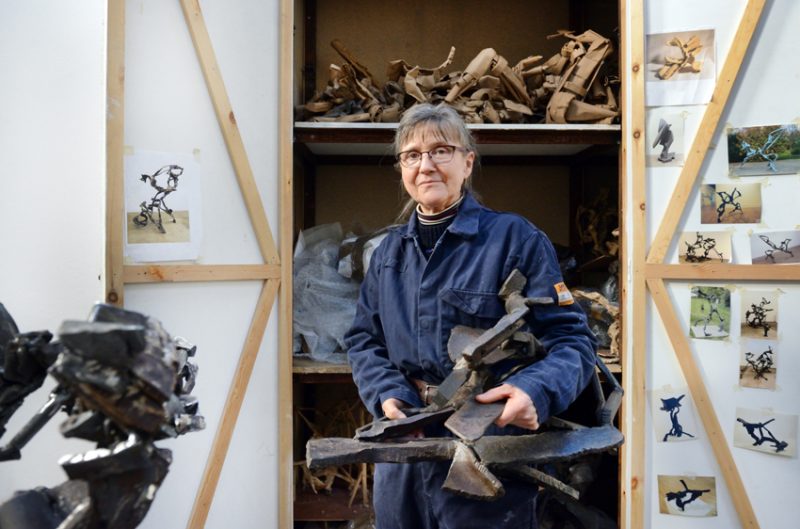
Katherine Gili in her Faversham studio. Photo: Anne Purkiss
‘Steel is a very difficult material to work with. It’s cold, hard and heavy and doesn’t want to be changed. That’s what challenges me.’
Katherine Gili is a sculptor in steel. Sparks Fly, a major retrospective of her work, 1974 to 2018, is currently on show in the opulently-marbled lobby of One Canada Square until the end of February, showing the sculptural progression from the balance and weight of the early cut and welded sculptures into the physicality and sense of movement in later forged steel pieces.
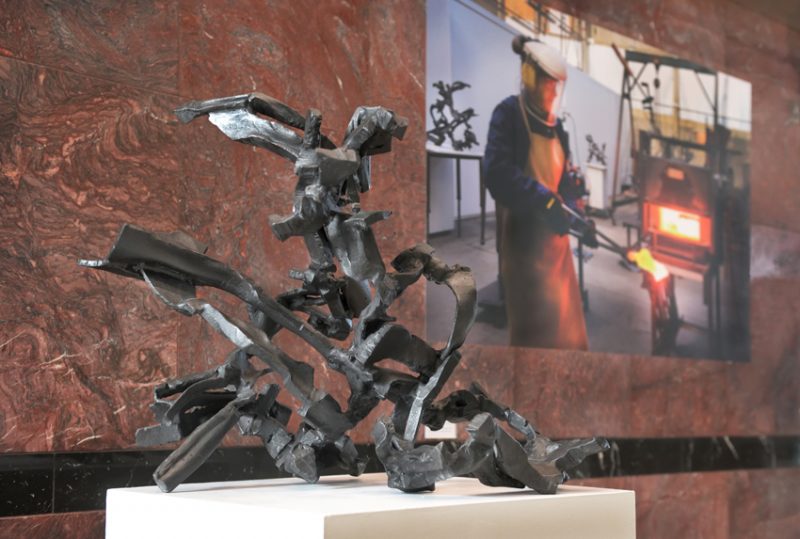
Meril 2014, forged steel at One Canada Square. Photo: Anne Purkiss
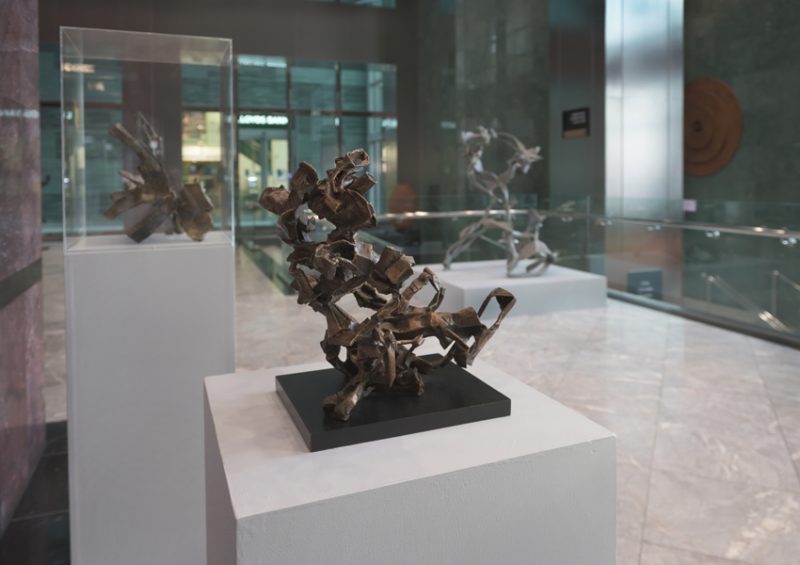
Twyblade, created from paper and cast in bronze 2017-18 and behind, Angouleme 2006-09 at One Canada Square. Photo: Anne Purkiss
Katherine was elected a Fellow of the Royal Society of Sculptors in 1999 and awarded the Jack Goldhill Award for Sculpture in the Royal Academy Summer Exhibition 2013. Her work is represented in the collections of the Arts Council of Great Britain; Bradford Museums and Galleries; City of Lugano, Switzerland and the General Electric Corporation in the United States. There are examples of her sculptures in private collections in Spain, Britain and the United States including the private collection of Lord Peter Palumbo at the Frank Lloyd Wright house Kentuck Knob, and the Leo and Eileen Herzel Collection. Her sculptures have been exhibited many times around the world. In 1995, she moved to Faversham.
In 1966 at the age of 18, Katherine arrived at Bath Academy of Art with the idea of being a painter. As part of this foundation course, she was asked to make a head in clay and model it without using her hands. She used a stick, whacking and smacking it into shape and was suddenly excited by the physicality of working in three dimensions. By the third year, she was working in wood, steel and stone. She moved to London to study at St Martin’s School of Art and started to focus on steel. Looking back at this path, she says: ‘These things are so instinctive; I was just following my nose.’ She moved from St Martin’s to Stockwell Depot, the only woman in a group of young sculptors who were soon to gain an international reputation for abstract art in Britain. At this point, Katherine was using sheets of steel – cutting, bending and welding.
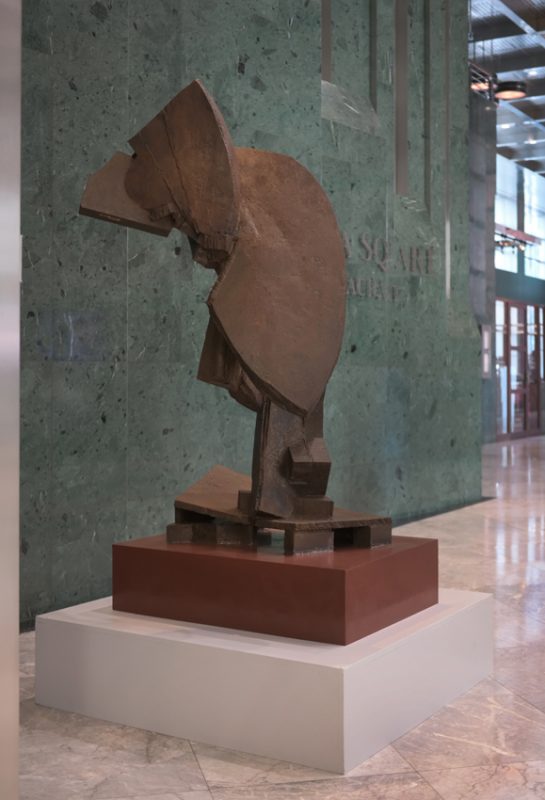
Blow 1978-79, mild steel at One Canada Square. Photo: Anne Purkiss
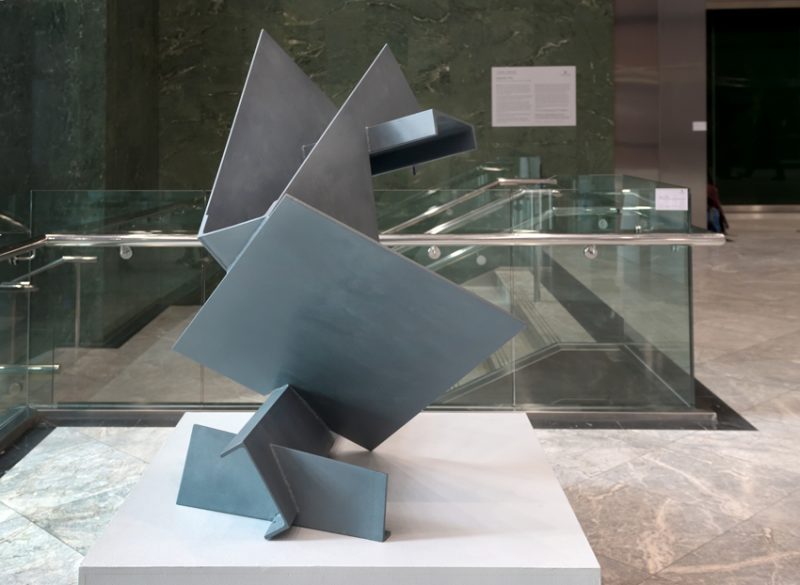
Splay 1974, mild steel at One Canada Square. Photo: Anne Purkiss
Shift 1974, Splay 1974, Cut Out 1977 and Blow 1978-79 which are on display at One Canada Square, are fine examples of her early cut and welded work. Then in the early 1980s, Katherine moved to a studio in Greenwich, installed a gantry so that she could lift the massive weights of steel she needed, and a coke-fired forge which allowed her to work steel in a different way. Her piece, Leonide 1981-1982, pictured below, marks this progression. ‘I worked with dancers and learnt a lot about how the body moves. Leonide was based on studying the movements of two physically different dancers, Leonora and Edie, and made from a series of movements which built up in the sculpture. All my work since then starts with the body.’ She had to move forward: ‘There was no way I could get that physicality with cutting steel.’

Leonide 1981-82, forged mild steel at One Canada Square, courtesy of Bradford Museums and Galleries, City of Bradford MDC. Photo: Anne Purkiss
In an essay about her work, Robert Persey describes how ‘Katherine has worked with her life models in a variety of ways that enables her to sense as well as think about what constitutes physicality without considering herself as a mere observer of natural forms.’
Katherine’s sculptures are created in the making. She says: ‘I never quite know what happens next. It’s a constant process. I don’t design. I work with the material to achieve the sculpture. I’m interested in learning and expressing through making. I’ve been working with steel for so long that I’m very skilled at putting things together, setting my work out and being in control of my materials. But it’s that extra step that really makes the sculpture, going further than what I already know.’
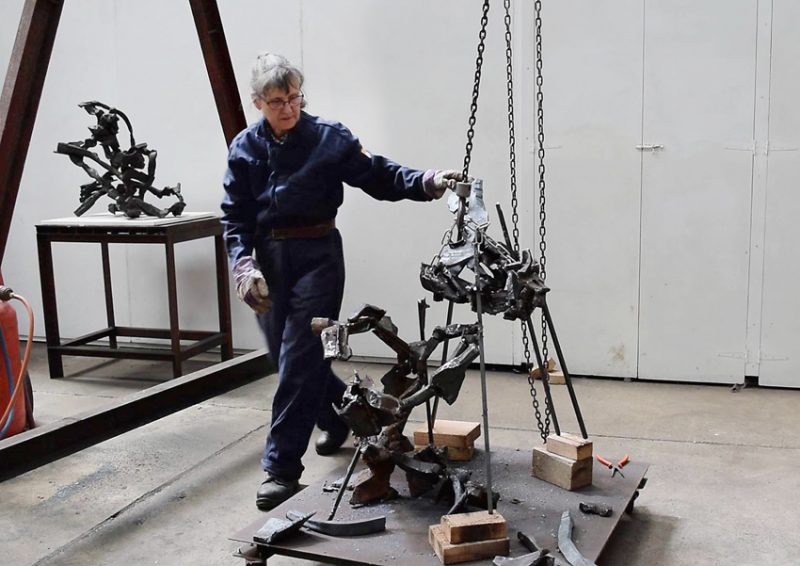
Katherine in her studio 2017. Photograph: Cameron Amiri
Sometimes she can’t get there and the sculpture doesn’t work. Sometimes, she will find one small part which means something and ditch the rest. ‘I don’t feel precious about it,’ she says. Her later work is often complex. Individually-forged pieces are put together in relationships which create intense and intricate works like her most recent exhibited work, Escapade. Katherine says: ‘It’s very fluid, forms open up, but if one part needs removing, the relationships of other parts of the work change.’
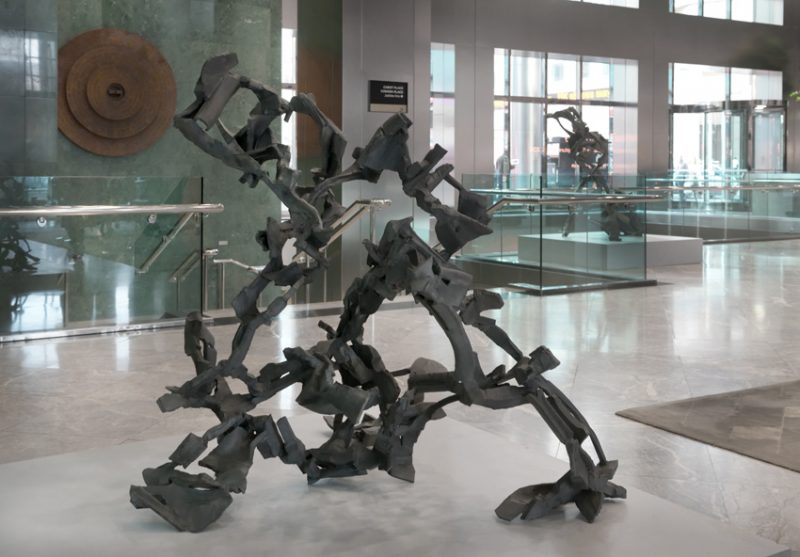
Petiole 2014-15, forged mild steel at One Canada Square. Photo: Anne Purkiss
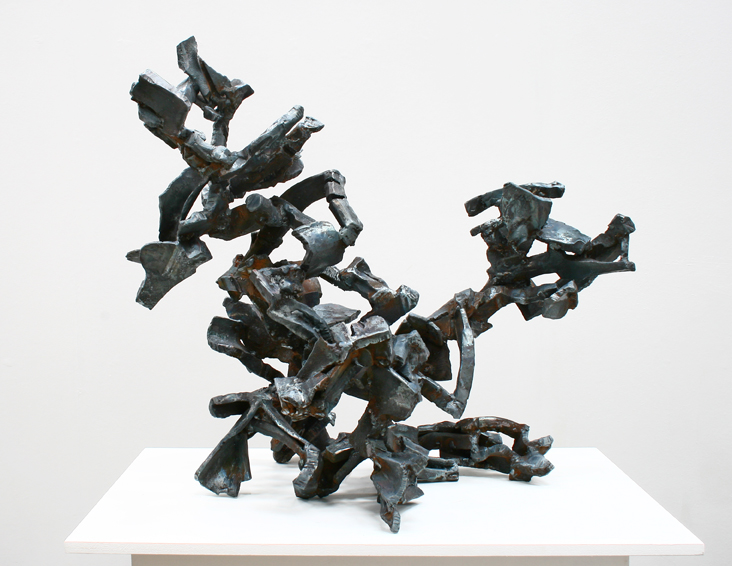
Escapade 2017-18, forged mild steel
A film of Katherine working, which plays in a loop at the Canada Square exhibition, shows the absolute weight of the steel, its resistance to surrendering its intractability, the power of heat, and the energy as Katherine, in overalls and heavy boots, a visor to protect her from the gushing, flying sparks, pulls and forms the steel, transforming the inert bars and girders.
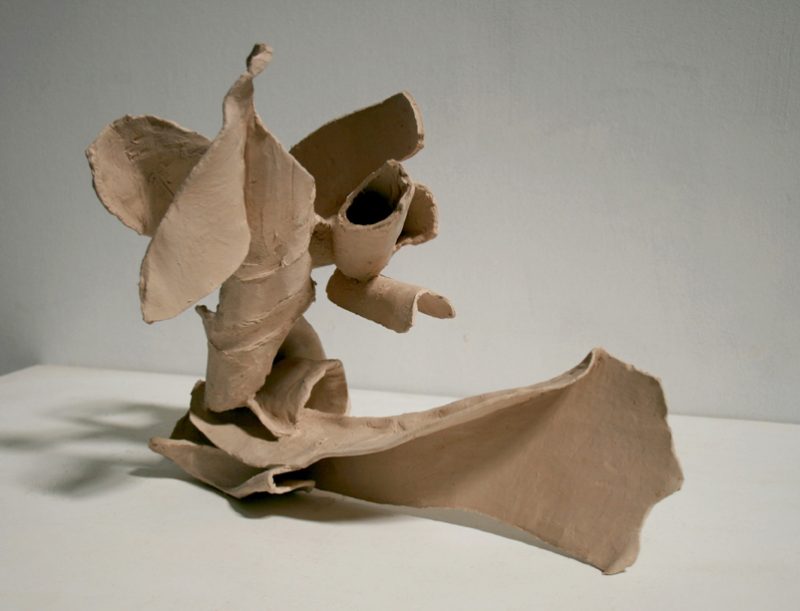
Anew 2008, fired paper clay
She has experimented with other materials and the exhibition shows examples of Katherine’s work in paper clay. ‘It’s a Japanese technique I became interested in. Paper clay has structural strength: it’s flexible, you can move it and build on it. I wanted to try something else and found it very strange because there was no resistance. I’ve no interest in doing it now. Steel has been the constant.’
‘The more sculptures I make, the further I can go with understanding.’
Katherine Gili and Ann Elliott, the curator of Sparks Fly, will tour the exhibition at One Canada Square on Tuesday 12 February, 6.30-7.15pm. The tour is free but you should email publicart@canarywharf.com to reserve a place.
Katherine Gili’s work is represented by Felix & Spear.